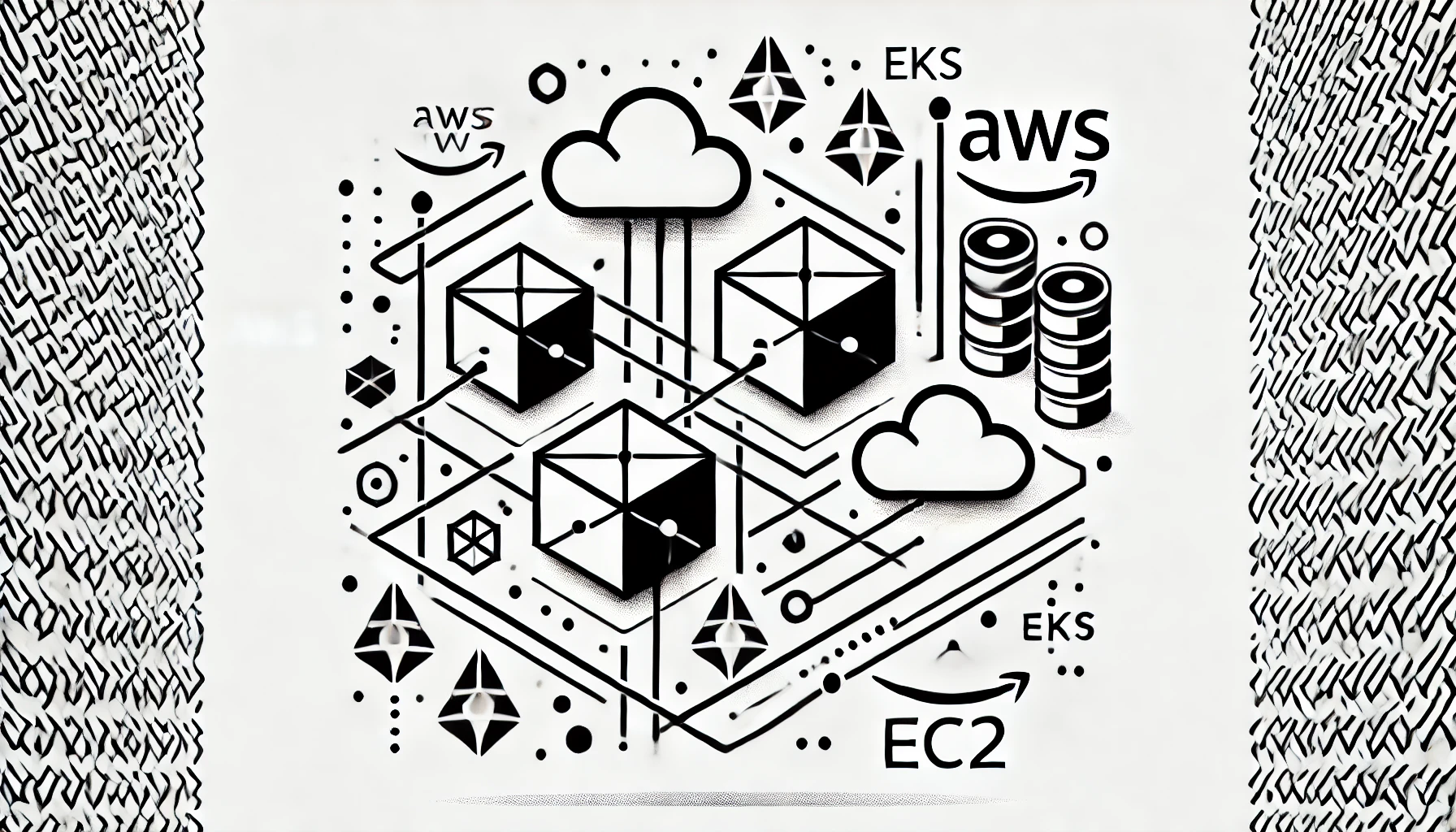EKS Cluster Setup and Management with eksctl
 Harshwardhan Choudhary
Harshwardhan Choudhary
After years of deploying EKS clusters across various scenarios, from weekend projects to enterprise deployments, I've developed strong opinions about each deployment method. Let me walk you through my experiences and help you choose the right approach for your needs.
Quick Overview: My Personal Take
Before diving deep, here's my TL;DR:
eksctl: My go-to for personal projects and quick starts
Terraform: Best for enterprise and multi-cloud setups
CDK: Great when your team loves TypeScript/Python
CloudFormation: Solid but verbose; I mainly use it via CDK
Deep Dive: Each Method in Detail
1. eksctl: The Swift and Simple Approach
When I'm prototyping or need a cluster quickly, eksctl is my first choice. Here's why:
bashCopy# The simplest way to get started
eksctl create cluster --name weekend-project --nodes 2
# My favorite production setup
eksctl create cluster -f prod-config.yaml
My go-to production configuration:
yamlCopyapiVersion: eksctl.io/v1alpha5
kind: ClusterConfig
metadata:
name: prod-cluster
region: us-west-2
vpc:
cidr: "192.168.0.0/16"
nat:
gateway: HighlyAvailable
nodeGroups:
- name: critical-workloads
instanceType: m5.xlarge
desiredCapacity: 3
privateNetworking: true
labels:
workload: critical
taints:
dedicated: "critical:NoSchedule"
- name: spot-workloads
instanceTypes: ["t3.large", "t3.xlarge"]
spot: true
desiredCapacity: 2
labels:
workload: flexible
When I Use It
Personal projects
Quick prototypes
Simple production setups
When teaching others about EKS
2. Terraform: The Enterprise Workhorse
For my enterprise clients or complex multi-cloud setups, Terraform is unbeatable. Here's my battle-tested setup:
hclCopymodule "eks" {
source = "terraform-aws-modules/eks/aws"
cluster_name = "enterprise-cluster"
cluster_version = "1.27"
vpc_id = module.vpc.vpc_id
subnet_ids = module.vpc.private_subnets
# My preferred node group setup
eks_managed_node_groups = {
critical = {
min_size = 3
max_size = 10
desired_size = 3
instance_types = ["m5.xlarge"]
capacity_type = "ON_DEMAND"
labels = {
workload = "critical"
}
taints = [
{
key = "dedicated"
value = "critical"
effect = "NO_SCHEDULE"
}
]
}
spot = {
min_size = 2
max_size = 20
desired_size = 2
instance_types = ["t3.large", "t3.xlarge"]
capacity_type = "SPOT"
labels = {
workload = "flexible"
}
}
}
# Authentication and RBAC
manage_aws_auth_configmap = true
aws_auth_roles = [
{
rolearn = "arn:aws:iam::66666666666:role/role1"
username = "role1"
groups = ["system:masters"]
},
]
}
When I Use It
Multi-cloud environments
Complex infrastructure requirements
When working with enterprise clients
Need for strong state management
3. AWS CDK: The Developer's Choice
When I'm working with teams that live and breathe TypeScript or Python, CDK feels natural:
typescriptCopyimport * as eks from 'aws-cdk-lib/aws-eks';
import * as ec2 from 'aws-cdk-lib/aws-ec2';
export class EksStack extends cdk.Stack {
constructor(scope: cdk.Construct, id: string, props?: cdk.StackProps) {
super(scope, id, props);
// My preferred cluster setup
const cluster = new eks.Cluster(this, 'DevCluster', {
version: eks.KubernetesVersion.V1_27,
defaultCapacity: 0,
vpc: new ec2.Vpc(this, 'EksVpc', {
maxAzs: 3,
natGateways: 1,
}),
endpointAccess: eks.EndpointAccess.PRIVATE,
});
// Critical workload node group
cluster.addNodegroupCapacity('CriticalNodes', {
instanceTypes: [ec2.InstanceType.of(ec2.InstanceClass.M5, ec2.InstanceSize.XLARGE)],
minSize: 3,
maxSize: 10,
desiredSize: 3,
labels: {
workload: 'critical',
},
taints: [{
key: 'dedicated',
value: 'critical',
effect: eks.TaintEffect.NO_SCHEDULE,
}],
});
// Spot instances for flexible workloads
cluster.addNodegroupCapacity('SpotNodes', {
instanceTypes: [
ec2.InstanceType.of(ec2.InstanceClass.T3, ec2.InstanceSize.LARGE),
ec2.InstanceType.of(ec2.InstanceClass.T3, ec2.InstanceSize.XLARGE),
],
capacityType: eks.CapacityType.SPOT,
minSize: 2,
maxSize: 20,
desiredSize: 2,
labels: {
workload: 'flexible',
},
});
}
}
When I Use It
Teams comfortable with TypeScript/Python
Need for strong type checking
AWS-focused environments
Want to leverage existing AWS constructs
4. CloudFormation: The AWS Native
While I rarely write raw CloudFormation anymore, understanding it helps when working with CDK or debugging:
yamlCopyAWSTemplateFormatVersion: '2010-09-09'
Resources:
EksCluster:
Type: 'AWS::EKS::Cluster'
Properties:
Name: native-cluster
Version: '1.27'
RoleArn: !GetAtt EksServiceRole.Arn
ResourcesVpcConfig:
SecurityGroupIds:
- !Ref ClusterSecurityGroup
SubnetIds: !Ref SubnetIds
EksNodegroup:
Type: 'AWS::EKS::Nodegroup'
Properties:
ClusterName: !Ref EksCluster
NodeRole: !GetAtt NodeInstanceRole.Arn
ScalingConfig:
MinSize: 2
DesiredSize: 3
MaxSize: 10
Subnets: !Ref SubnetIds
InstanceTypes:
- t3.large
When I Use It
Need AWS-native solutions
Working with existing CloudFormation stacks
Simple, standalone clusters
Making the Choice: My Decision Framework
I choose my deployment method based on these factors:
Project Scale
Personal/Small Team → eksctl
Enterprise → Terraform/CDK
Team Experience
AWS experts → CDK
Multi-cloud teams → Terraform
Kubernetes focused → eksctl
Infrastructure Complexity
Simple → eksctl
Complex → Terraform
AWS-specific complexity → CDK
Long-term Maintenance
Need state management → Terraform
Heavy AWS integration → CDK
Quick deployment → eksctl
Conclusion
After years of working with EKS, I've learned that no single tool is perfect for every situation. eksctl remains my favorite for quick starts and simple production deployments, but I don't hesitate to reach for Terraform or CDK when the situation calls for it.
The key is understanding each tool's strengths and choosing the right one for your specific needs. Don't let anyone tell you there's only one "right way" to deploy EKS – use what works best for your situation.
Remember: The best tool is the one that helps you ship reliable infrastructure while keeping your team productive and your maintenance burden manageable.
Subscribe to my newsletter
Read articles from Harshwardhan Choudhary directly inside your inbox. Subscribe to the newsletter, and don't miss out.
Written by

Harshwardhan Choudhary
Harshwardhan Choudhary
Passionate cloud architect specializing in AWS serverless architectures and infrastructure as code. I help organizations build and scale their cloud infrastructure using modern DevOps practices. With expertise in AWS Lambda, Terraform, and data engineering, I focus on creating efficient, cost-effective solutions. Currently based in the Netherlands, working on projects that push the boundaries of cloud computing and automation.